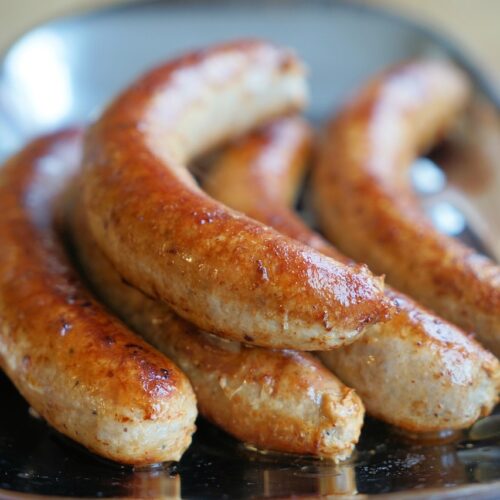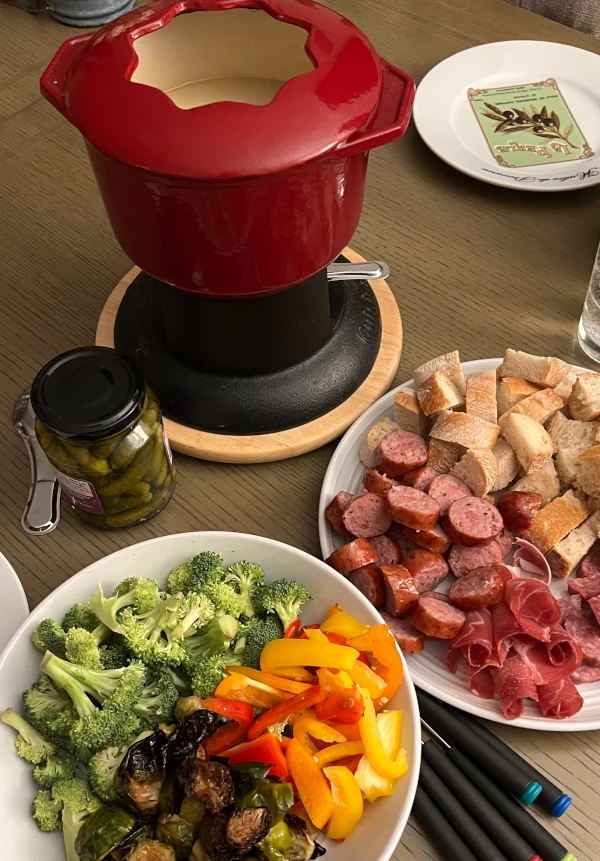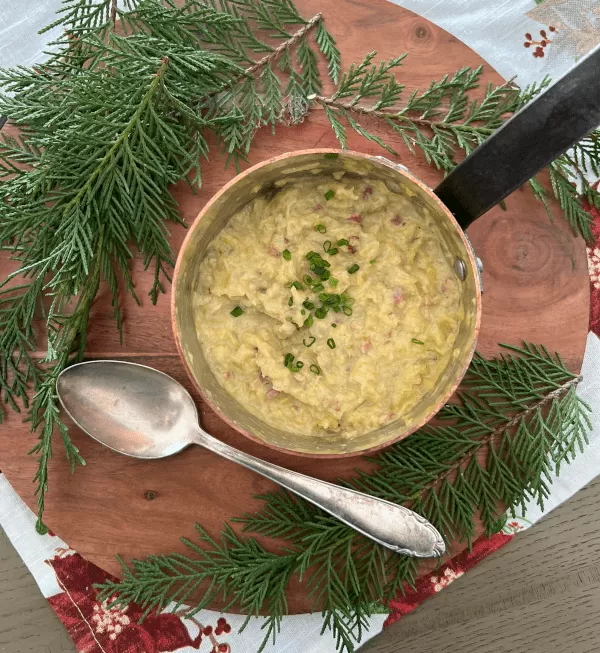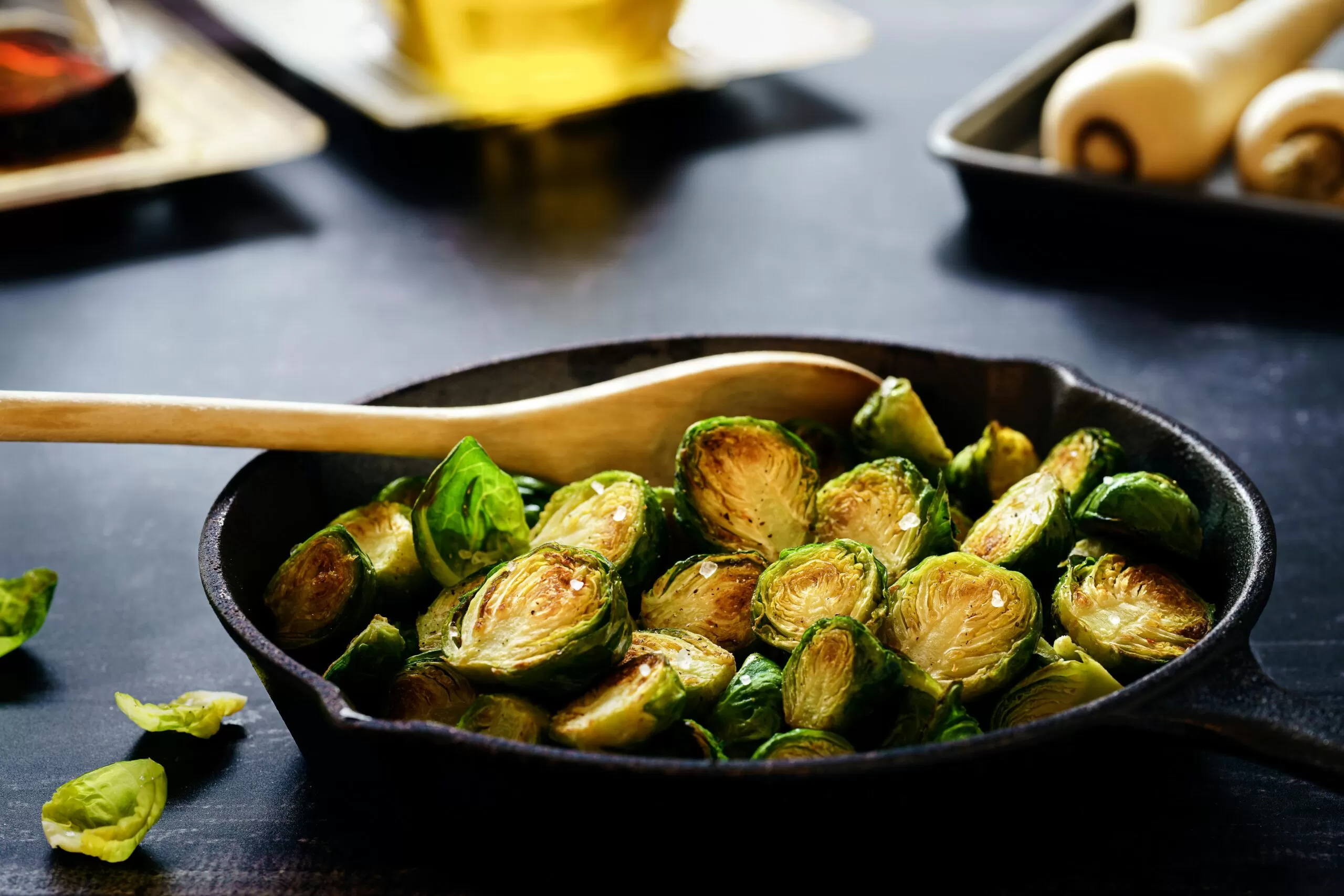When I first came to Philadelphia, I never imagined that bratwurst—one of the most traditional German sausages—would become such a defining part of my culinary identity in this city. Looking back, it’s clear that this humble sausage, with its rich history and bold flavors, has not only shaped my career but also left a lasting mark on Philadelphia’s food scene. While I’m no longer cooking at Brauhaus Schmitz, the memories and experiences from my time there remain a significant chapter in my life. It was at Brauhaus Schmitz where I had the opportunity to share my passion for German cuisine with the people of Philadelphia, and bratwurst was central to that journey.

The Birth of My Culinary Passion
My love for sausage-making didn’t start in Philadelphia; it’s something that’s been with me for as long as I can remember. Growing up, I was surrounded by the flavors and traditions of German cooking, and it didn’t take long for me to develop a deep appreciation for the art of charcuterie. Sausage-making, in particular, fascinated me—the meticulous process, the balance of spices, and the way different meats come together to create something greater than the sum of their parts. When I began my culinary training, I knew that I wanted to bring that same passion and respect for tradition to every dish I created.
Bringing Bratwurst to Philadelphia
When I first arrived in Philadelphia, I had no idea that in short time I would fine myself cooking German food – a food that has been near and dear to me for as long as I can remember. I was looking for an opportunity to introduce authentic German flavors to a city that was eager to embrace something new. Brauhaus Schmitz, which opened in 2009, became the perfect platform for that. I met the owners of this soon to open restaurant through a friend and after a few conversations we had them over our house and cooked a traditional German dinner. We made everything from the sausages to the pretzels. It turned out to be a pivotal moment in my career. Jess and I were offered the jobs of chef and pastry chef and from the outset, we aimed to create a menu that honored the time-honored techniques of German cuisine while appealing to the diverse palates of Philadelphia’s food lovers. Bratwurst quickly became one of our signature items—not just because it’s a classic, but because it represented everything I loved about German cooking: simplicity, bold flavors, and a deep connection to tradition. We made 50 pounds for opening week and sold out hours after we opened! This was just the beginning – eventually we made all of our sausages and charcuterie in house and it became one of the dishes I am most known for.
The Craft of Sausage-Making
Sausage-making is as much an art as it is a science. Each new sausage I made at Brauhaus Schmitz was the result of careful consideration—choosing the right cuts of pork, grinding the meat to the perfect texture, and blending just the right amount of spices to achieve that distinctive flavor. I’ve always believed that the key to a great sausage lies in the details, and I spent years honing my technique to ensure that every bite of bratwurst was a testament to the quality and care that went into its creation. Sausage to me is like a blank canvas for an artist. There is so much you can do with it. Even though I became known for German sausages at Brauhaus, I have made so many different types of sausage from Portuguese linguica to English bangers. When traveling I almost always sample the locally made sausages.
At Brauhaus Schmitz, we made our bratwurst in-house, using a traditional recipe that I refined over the years. The pork was seasoned with a blend of spices—marjoram, caraway, mace, and white pepper, to name a few—and then it was carefully stuffed into natural casings. The sausages were then poached and grilled, to bring out their full flavor. It was a labor-intensive process, but one that I believed made all the difference.
Recognition and the “Best of Philly” Awards
I’m incredibly proud of the recognition that our bratwurst received during my time at Brauhaus Schmitz. Twice, it was named “Best of Philly,” an honor that meant a lot to me because it reflected the hard work and dedication we put into every sausage. The first time we won, it felt like a validation of everything I had been working toward since coming to Philadelphia. The second time was just as rewarding because it showed that we were able to maintain that high standard of quality.
Winning “Best of Philly” not once but twice was a humbling experience, and it really drove home how much the people of Philadelphia appreciate good food. It’s one thing to bring a dish to the table; it’s another to have it embraced by the community the way our bratwurst was. These awards are a reminder that tradition and authenticity matter, and that’s something I’ve always striven to bring to every dish I created.
Reflecting on My Time at Brauhaus Schmitz
Brauhaus Schmitz became known in Philadelphia as the go-to place for authentic German cuisine, and I’m proud to say that our bratwurst played a big role in that. During my time there, I became known for my sausage-making skills, which is something I take a lot of pride in. It wasn’t just about making a great sausage—it was about preserving a culinary tradition and sharing it with a new audience.
One of the things I loved most about making bratwurst was seeing the reaction from our guests. Whether it was someone trying it for the first time or a regular who came back time and again for their favorite dish, there was something incredibly rewarding about knowing that I had created something that resonated with people. That connection is what drove me to keep refining my recipes and exploring new ways to bring the flavors of Germany to Philadelphia.
A Closer Look at the Process
For those interested in what goes into making a truly great bratwurst, the process is both an art and a craft. Starting with the right cut of pork is essential. I prefer using a combination of pork shoulder and back fat, which gives the sausage its ideal balance of meatiness and juiciness. The meat is coarsely ground to ensure that the bratwurst has a satisfying texture, rather than being too finely processed, which can make the sausage feel dense and dry.
Once the meat is ground, it’s time to season it. This is where the magic happens, and where each sausage maker can really put their signature on the dish. For my bratwurst, I used a blend of spices that included marjoram, white pepper, nutmeg, and a few other secret ingredients that gave the sausage its distinctive flavor. I also added a small amount of crushed ice during the mixing process to help bind the fat and keep the sausage from becoming greasy.
After the seasoning was mixed in, the meat was stuffed into natural casings, which are crucial for achieving the right snap when the sausage is cooked. The sausages were then linked, twisted to create individual portions, and left to air-dry slightly before cooking. Depending on how they’d be served, the bratwurst might be poached in beer, grilled over an open flame, or smoked to impart additional layers of flavor.
The Future of Bratwurst in My Culinary Journey
As I look to the future, I’m excited to see how bratwurst continues to play a role in my culinary journey. While I’ll always stay true to the traditional recipes that made Brauhaus Schmitz a Philadelphia favorite, I’m constantly experimenting with new flavors and techniques. Whether it’s incorporating different types of meat, experimenting with smoking methods, or introducing new spice blends, there’s always room to push the boundaries while respecting the essence of what makes bratwurst so special.
One of the things I’m most excited about is the growing interest in artisanal and house-made sausages. People are becoming more aware of what goes into their food, and there’s a real appreciation for the craftsmanship behind a well-made sausage. While I’m no longer at Brauhaus Schmitz, I’m committed to continuing that tradition and keeping the art of sausage-making alive in my newest endeavor, Hex Provisions. I’ve partnered with a local butcher shop, Dundore & Heister, to bring the best sausages and charcuterie to the market. All of our products are meticulously tested before being sold and we use only the best ingredients. We only use all natural, antibiotic free, and no added hormone meats, animal welfare certified when possible, and a natural cure for smoked and cured products. I’m really proud of these products and can’t wait to see the growth of these products. You can find them regionally in some grocery stores and they will be available soon to purchase frozen.

Homemade German Style Bratwurst
Equipment
- 1 Sausage Stuffer
- 1 Meat Grinder If you don't want to grind your own meat, ask your local butcher or buy already ground pork.
Ingredients
- 5 lb/2.3 kg boneless pork shoulder cut into 1-in/2.5-cm cubes or ground pork
- 40 g kosher salt
- 7 g ground white pepper
- 3 g caraway seeds
- 3 g ground mace
- 3 g ground ginger
- 12 g finely chopped fresh marjoram
- 3 feet/1 m hog casings preferably 29 to 32 mm in diameter (optional)
Instructions
- Place the cubed pork and the meat grinder parts in the freezer until the pork is very cold and firm and the grinder parts are cold, about 1 hour. If using ground pork, skip this step.
- In a bowl, combine the salt, white pepper, caraway seeds, mace, ginger, and marjoram and stir to mix thoroughly.
- If you are using pork shoulder, set up the meat grinder according to the manufacturer’s instructions and fit it with the medium grinding plate. Grind the pork into a large bowl. Add the seasoning mixture to the pork and mix well with your hands. Once it is seasoned, pass the meat through the grinder again.If you are using ground pork, put it in a large bowl. Add the seasoning mixture to the pork and mix well with your hands.
- Cover the bowl and refrigerate the mixture while you set up the sausage stuffer. Or, if you prefer to make patties rather than stuff casings, shape the mixture into patties now, making them each about 3 in/7.5 cm in diameter and 1⁄2 in/12 mm thick. The patties can be cooked right away on a grill or on the stove top. Or you can arrange them on a sheet pan, stacking them separated by squares of waxed paper, cover, and refrigerate.
- Soak the casings in lukewarm water to cover for 30 minutes, then run cool water through them to rinse away some of the salt. Set up the sausage stuffer according to the manufacturer’s instructions, attaching the proper-size stuffing tube for the casing. Slide a casing onto the stuffing tube, tie a knot at the end of it, and begin stuffing the casing, making sure it is not filled too tightly or it will burst during cooking.
- When all of the sausage mixture is in casings, starting at the tied end of a stuffed casing, measure about 6 in/15 cm for the first sausage and pinch at that point to mark the length. Then measure off the second sausage length and pinch again. Now, twist the first pinched point a few times in one direction.Measure the third link, pinch it, and then twist it a few times in one direction as the first link.Measure the fourth link, pinch the point, and then measure the fifth link, pinch it, and twist a few times in the same direction as before. Continue in this way, twisting only every other link, until you reach the end of the casing, then tie off the end.
- Coil the sausages on a sheet pan, cover, and refrigerate overnight to rest. (They need to rest or the casing will come apart when you cut between the sausages.)
- You can cut between the links and cook the sausages on a grill or in a 300°F/150°C oven until heated through. They can also be wrapped tightly in plastic wrap and refrigerated for up to 2 days, or frozen for up to 2 months.
Notes
Final Thoughts
Bratwurst has been a significant part of my culinary journey, and I’m proud of the role it played in helping Brauhaus Schmitz become a beloved institution in Philadelphia. Winning “Best of Philly” twice for our bratwurst is a testament to the hard work and dedication of our entire team during my time there, and it’s an honor that I don’t take lightly. But more than the awards, it’s the connection with our guests that made it all worthwhile. Knowing that our bratwurst became a favorite for so many people in this city is incredibly rewarding, and it inspires me to keep pushing the boundaries of what we can do with this iconic sausage.
As I move forward, I’m excited to continue sharing the flavors of Germany with Philadelphia and to keep exploring new ways to bring the art of sausage-making to life. Whether you’re a longtime fan of our bratwurst or trying it for the first time, I hope you can taste the passion and tradition that went into every bite during my time at Brauhaus Schmitz. Bratwurst isn’t just a dish—it’s a legacy, one that I’m proud to have been a part of and one that I look forward to continuing in new and exciting ways.




